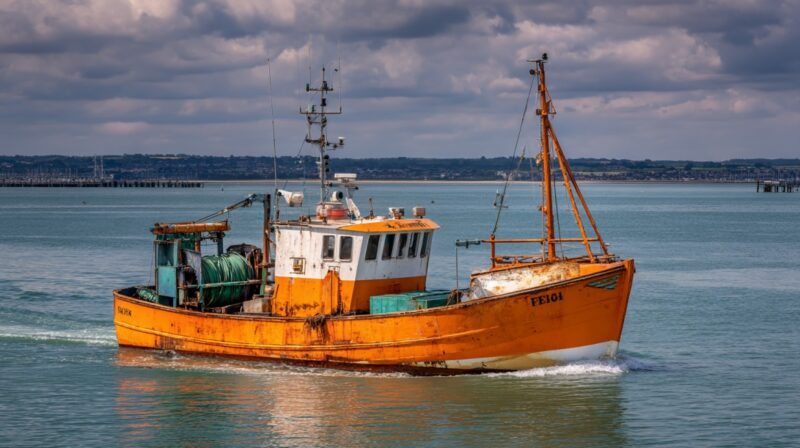The world of fishing vessels is incredibly diverse, encompassing a wide range of boat types designed for specific fishing environments, techniques, and target species. From simple unpowered canoes to massive factory ships, modern fishing vessels have evolved significantly over centuries to address the challenges faced by fishermen in different waters.
Understanding the different types of fishing vessels is crucial for both recreational anglers and commercial fishermen to maximize their fishing success and ensure safety on the water. With approximately 4.9 million vessels globally, designs vary based on regional traditions, fishing techniques, and target species.
Key Takeaways
- The global fishing fleet consists of diverse vessel types, each designed for specific fishing environments and techniques.
- Fishing vessel design has evolved to address specific challenges faced by fishermen in different waters.
- Understanding vessel types is crucial for both recreational and commercial fishing success and safety.
- Modern fishing vessels range from small recreational boats to large commercial trawlers.
- Vessel design relates to fishing methods and environments demand specialized characteristics.
- The diverse world of fishing vessels provides valuable insights into the technology that brings seafood to our tables.
The Diversity of Fishing Vessels
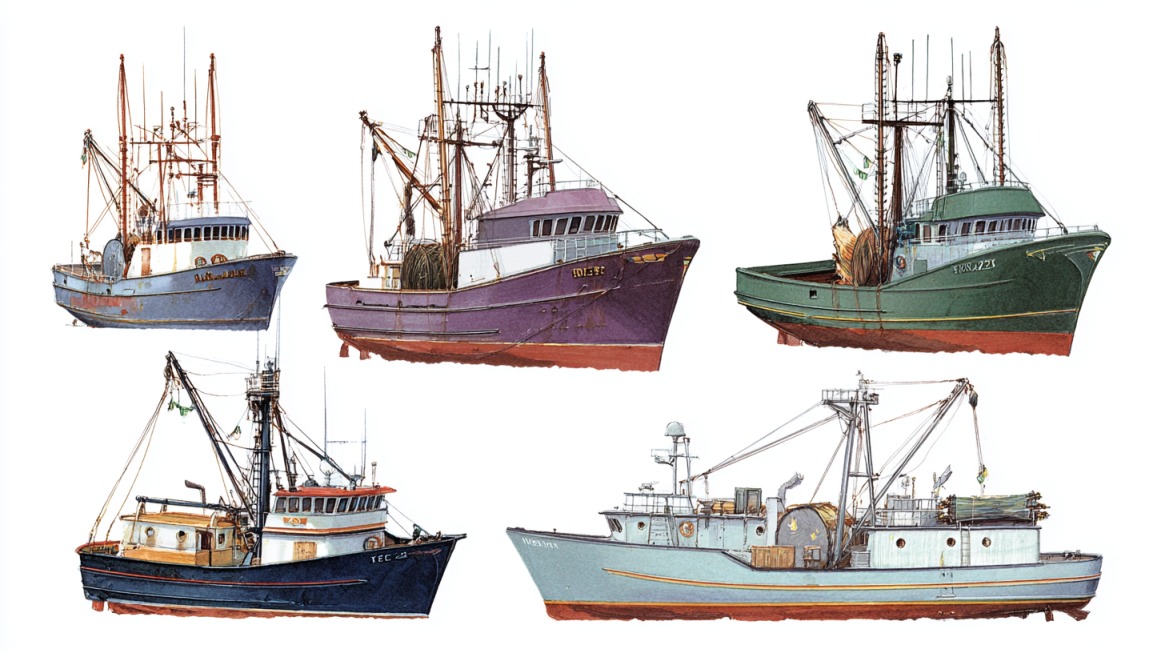
The world of fishing vessels is incredibly diverse, ranging from small, manually operated boats to large, technologically advanced commercial trawlers. This diversity is a result of centuries of evolution in fishing techniques, materials, and technology.
The Evolution of Fishing Vessel Design
Early fishing vessels included rafts, dugout canoes, and boats constructed from a frame covered with hide or tree bark. The oldest known fishing vessels date back to the Neolithic Period, around 7,000-9,000 years ago.
These ancient vessels were often made from coniferous tree logs, using simple stone tools.
The evolution of fishing vessel design has been influenced by various factors, including technological advancements, environmental considerations, and economic pressures.
Modern fishing vessels are made from a variety of materials, such as steel, fiberglass, and composite materials, offering improved durability and performance.
| Period | Vessel Type | Materials Used |
|---|---|---|
| Neolithic | Dugout Canoes | Coniferous Tree Logs |
| Ancient Civilizations | Planked Hulls | Wood, Sails |
| Modern Era | Trawlers, Factory Ships | Steel, Fiberglass, Composites |
How Vessel Types Relate to Fishing Methods
The design of a fishing vessel is closely related to its intended fishing method. For example, trawling vessels require powerful engines and strong hulls to pull heavy nets, while vessels designed for line fishing prioritize stability and deck space for handling lines.
Different fishing methods demand specific vessel characteristics to ensure effectiveness and safety.
Understanding these relationships is crucial for fishermen to select the right vessel for their specific fishing needs, whether in shallow waters or deep offshore fishing.
Small Recreational Fishing Vessels
Small recreational fishing vessels are the gateway to the world of fishing, providing an affordable and versatile means to enjoy the sport.
These vessels come in various designs, each catering to different fishing needs and environments.
Canoes and Kayaks
Canoes and kayaks are among the oldest and simplest fishing vessels, offering an intimate connection with the water and access to areas larger boats cannot reach.
They provide a silent approach to fish, exceptional maneuverability in tight spaces, and an eco-friendly option that requires no fuel.
Jon Boats and Skiffs
Jon boats are small, flat-bottomed boats ranging from 8 to over 20 feet, offering a simple and stable platform for fishing.
They feature flat or semi-V hulls that provide stability and shallow draft, perfect for accessing backwaters and flats.
Inflatable Boats
Inflatable boats range from 6.5 to 20 feet, are portable, affordable, and surprisingly sturdy.
They have evolved into sophisticated fishing platforms with rigid floors, multiple air chambers for safety, and the ability to mount small outboard motors.
Center Console Boats
Center console boats range from 25 to 60 feet, featuring an open hull and center console that offers 360-degree fishing access.
The elevated position of the center console provides better visibility for spotting fish, while the open deck layout maximizes fishing space.
Each of these small vessel types offers distinct advantages for different fishing environments, from the ultra-shallow capabilities of canoes to the rougher water handling of center console boats.
Modern materials and manufacturing techniques have dramatically improved their durability, performance, and features while keeping them affordable for recreational anglers.
Inshore Fishing Vessel Types
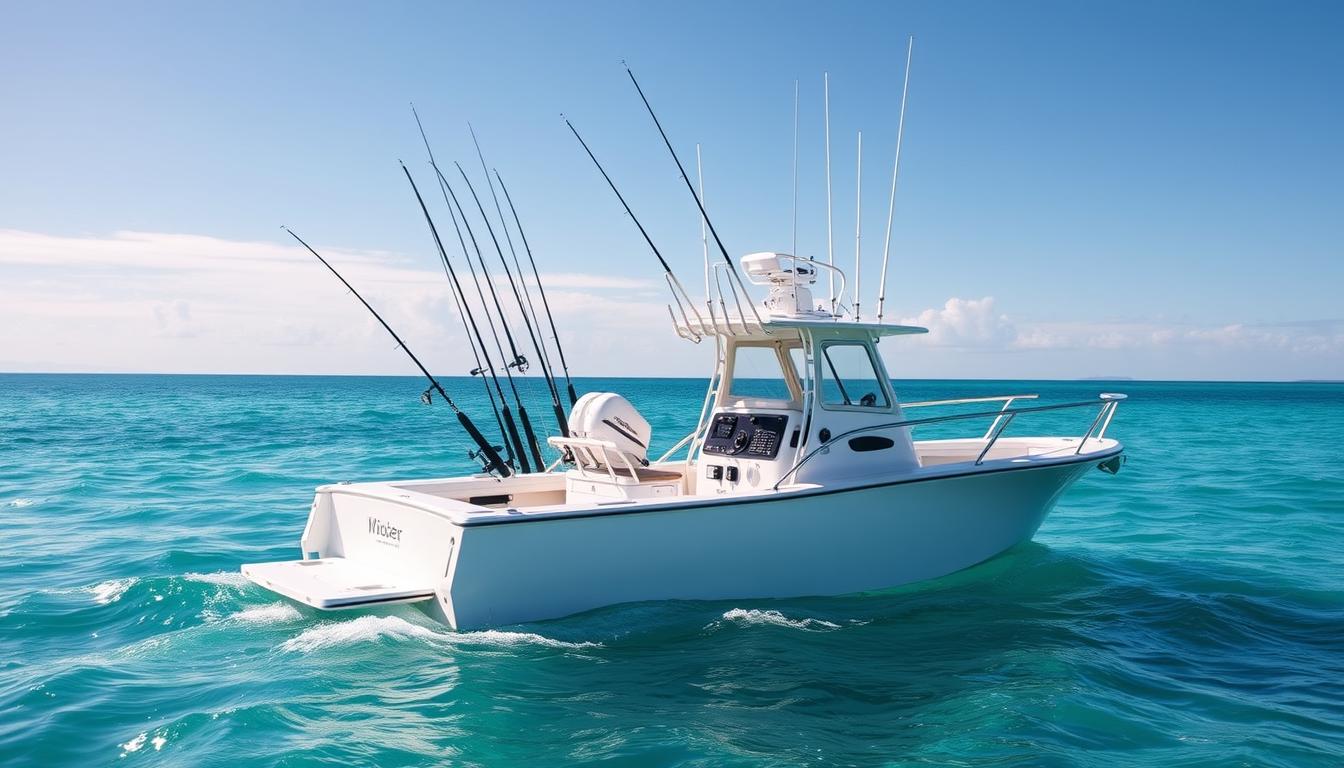
Inshore fishing vessel types vary, catering to different needs and environments. These vessels are designed for coastal waters, bays, estuaries, and nearshore environments where depth and weather conditions are less extreme than offshore.
Flats Boats and Bay Boats
Flats boats are lightweight, agile vessels usually between 13 and 22 feet long, designed for flats fishing with shallow draft and quiet operation.
Bay boats are typically 18 to 27 feet long, combining shallow draft for skinny water fishing and a V-hull to tackle larger waves.
- Flats boats represent specialized inshore vessels with extremely shallow drafts, allowing anglers to access skinny water flats.
- Bay boats offer a versatile compromise between flats boats and offshore vessels, with moderate drafts that allow access to shallow areas.
Dual-Console Boats
Dual-console boats range between 18 and 40 feet, featuring two separate console stations that create a walkthrough to the bow. They offer versatility for both fishing and family recreational use in inshore environments.
- The split console design provides protection from wind and spray while maintaining open deck space.
- Dual-console boats are popular for anglers who also use their vessels for watersports and cruising.
Cuddy Cabin Boats
Cuddy cabin boats are 20 to 30 feet, featuring a compact enclosed cabin for shelter. They add overnight capability to inshore vessels, with small forward cabins that provide shelter, storage, and sometimes basic accommodations for extended fishing trips.
- The enclosed space of cuddy cabins offers protection from elements and secure storage for valuable equipment.
- Cuddy cabin boats maintain substantial open deck space for fishing activities.
Offshore Recreational Fishing Vessels
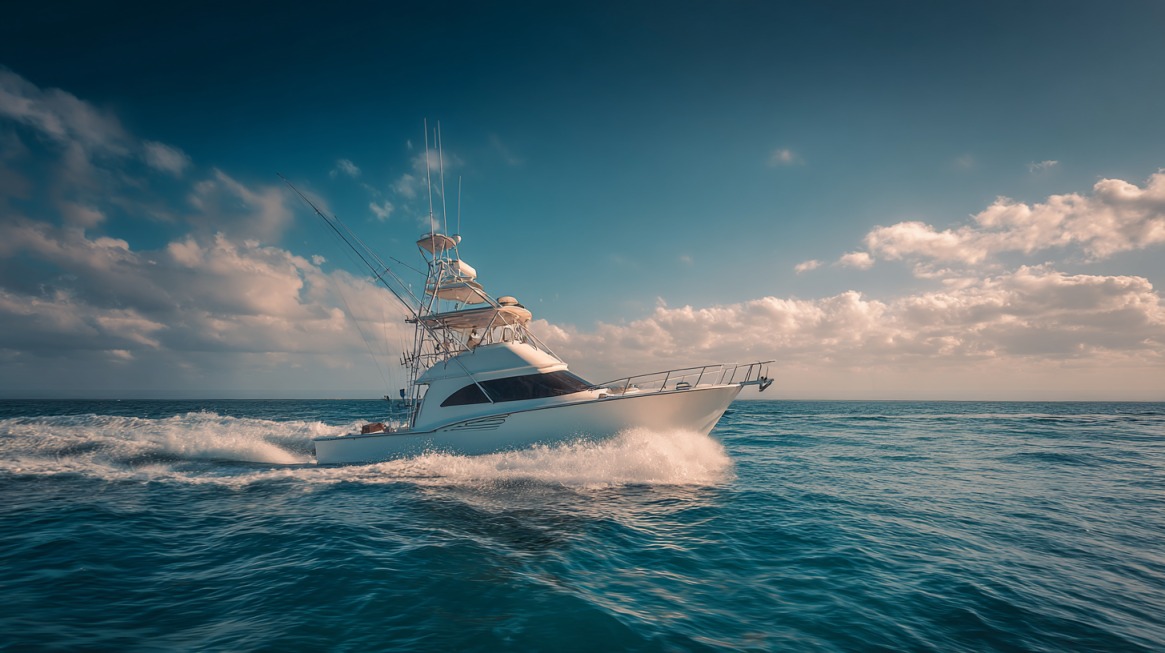
The world of offshore recreational fishing vessels is diverse, ranging from walkaround boats to luxurious sportfishing yachts.
These vessels are designed to handle the challenging conditions of open ocean environments, providing safety, range, and comfort for anglers targeting pelagic species.
Walkaround Boats
Walkaround boats represent an excellent entry-level offshore vessel, combining the protection of a small cabin with 360-degree fishability.
They typically span 18 to 30 feet, featuring a passageway that encircles the cabin structure, thus maintaining substantial open deck space for fishing activities.
Express Boats
Express boats elevate offshore capability with larger cabins, more powerful propulsion systems, and enhanced seakeeping abilities.
They are usually 30 to 50 feet long, with a streamlined design that integrates the helm and living quarters into one enclosed area, providing excellent visibility for the captain.
Sportfishing Yachts
Sportfishing yachts are the pinnacle of offshore recreational vessels, offering tournament-grade fishing features combined with luxury accommodations.
Measuring between 50 to 60 feet, these high-end vessels feature fighting chairs, massive livewells, tuna doors, and outriggers, alongside luxury cabins and gourmet galleys.
Commercial Fishing Vessel Types
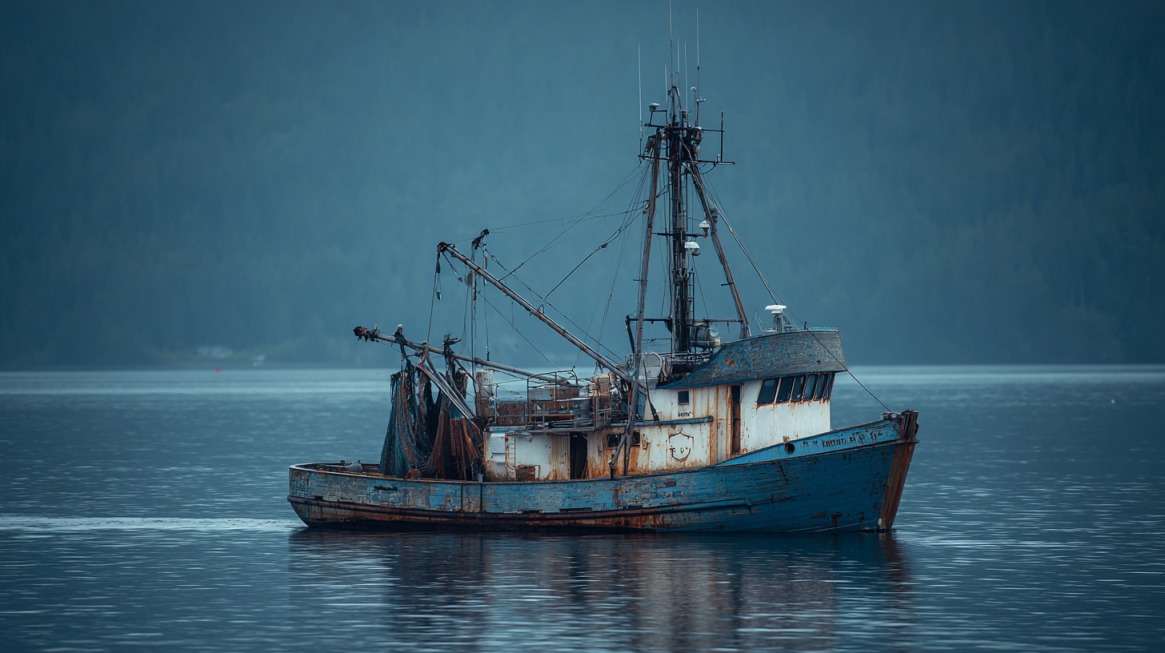
From trawlers to factory ships, commercial fishing vessels are engineered for maximum productivity and extended operations at sea.
These vessels represent the industrial side of seafood harvesting, designed for efficiency, extended operations, and high-volume catches that supply global markets.
Trawlers and Draggers
Trawlers are specialized vessels designed to tow large nets, either along the seabed or through the water column, capturing everything in their path that cannot escape through the net mesh.
The design of modern trawlers features powerful engines and extensive winch systems for handling heavy nets.
- Bottom trawlers target groundfish species with heavy nets dragged across the seafloor.
- Midwater trawlers pursue pelagic species with nets suspended in the water column.
Seiners and Purse Seiners
Seiners employ a different fishing method, using large encircling nets to surround schools of fish, then drawing the net closed to capture the entire school. Purse seiners are particularly effective for catching schooling pelagic species like tuna, mackerel, and sardines.
- Seine vessels feature open work decks and powerful hydraulic systems for managing massive nets.
- Purse seiners can encircle thousands of fish at once, making them highly efficient.
Factory Ships
Factory ships are the largest commercial fishing vessels, equipped with onboard processing facilities that can fillet, package, and freeze fish at sea. This allows for extended voyages far from port and enables these vessels to serve as mother ships for fleets of smaller catching vessels.
Modern commercial fishing vessels, including factory ships, increasingly incorporate technologies for selective fishing, bycatch reduction, and sustainable harvesting practices, reflecting the industry’s response to environmental concerns and regulatory requirements.
Specialized Fishing Vessels
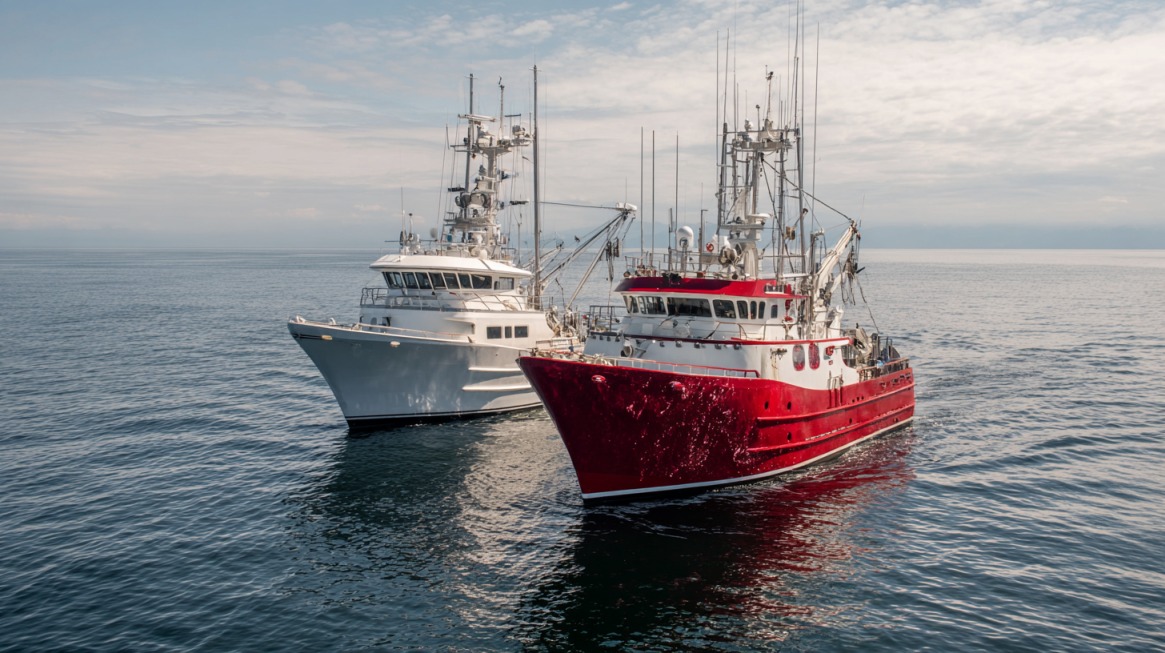
The fishing industry relies on a range of specialized vessels, each designed to optimize specific fishing techniques.
These vessels are engineered to target particular species, employing unique gear systems and deck layouts that enhance their specialized function.
Longliners
Longliners are equipped to deploy and retrieve extensive fishing lines that can stretch for miles, carrying thousands of baited hooks.
These vessels feature specialized line-handling equipment, bait preparation areas, and hook storage systems, allowing for efficient deployment and retrieval of their gear.
Gillnetters
Gillnetters deploy vertical panels of nearly invisible mesh nets that capture fish by their gills.
These vessels are designed with open working decks and specialized net-handling equipment, enabling the crew to deploy, retrieve, and clear the gillnets efficiently while maintaining vessel stability.
Crabbers and Trap Boats
Crabbers and trap boats are designed to deploy and retrieve heavy traps or pots that capture crustaceans and some fish species.
The design of these vessels features powerful hydraulic pot haulers, extensive deck space for storing traps, and often specialized launching systems.
| Vessel Type | Fishing Method | Target Species |
|---|---|---|
| Longliners | Longlining | Various fish species |
| Gillnetters | Gillnetting | Fish species caught by gills |
| Crabbers and Trap Boats | Trap fishing | Crustaceans and some fish |
Each of these specialized fishing vessel types reflects generations of design evolution, with features refined to maximize efficiency and safety.
Modern vessels incorporate advanced electronics for locating target species and monitoring gear performance, ensuring compliance with fisheries regulations.
Conclusion: The Future of Fishing Vessels
As the global fishing fleet evolves, it’s clear that the future of fishing vessels will be defined by innovation and sustainability. The industry has seen a shift from 5.3 million vessels in 2019 to 4.9 million in 2022, indicating a trend towards fewer but more capable vessels.
Technological advancements are playing a crucial role in this transformation. Advanced materials and construction techniques are creating more durable and efficient fishing boats. Automation and artificial intelligence are being integrated into vessel systems, enhancing safety and reducing crew requirements.
The future of fishing will be characterized by vessel specialization, with designs optimized for specific fisheries and techniques. Regulatory requirements are also driving innovation, with a focus on sustainability and reducing environmental impact.
As the industry continues to evolve, understanding the diverse world of fishing vessel types will be essential for appreciating the challenges and opportunities in this sector.

